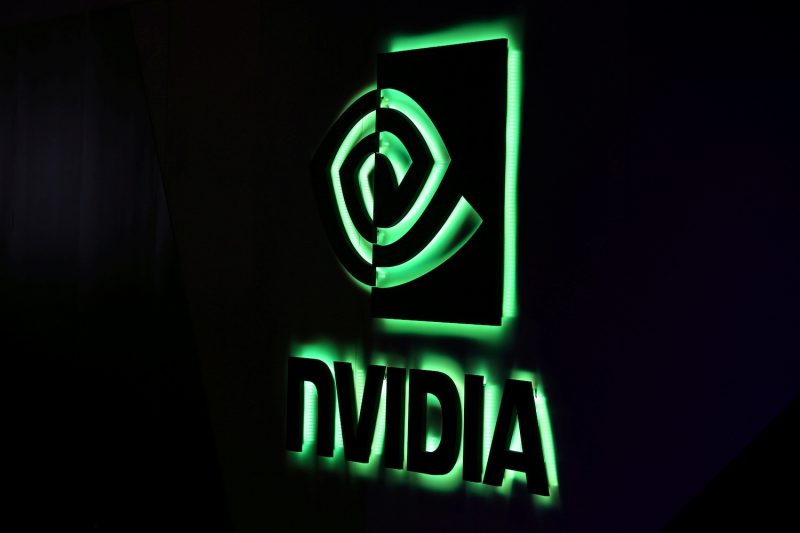US graphics chip maker Nvidia aims to be a powerhouse in an era of artificial intelligence with the big-ticket buy of Britain-based Arm, whose microprocessors are in many smartphones.
Japan’s SoftBank Group said Monday it is selling Arm to NVIDIA for up to $40 billion, potentially creating a new giant in the industry but sparking an investigation by UK regulators and fears about the impact on jobs.
If approved, the deal will be one of the largest acquisitions anywhere in the world this year and propel Nvidia to the forefront of the semiconductor sector.
Based in the Silicon Valley city of Santa Clara, Nvidia is led by co-founder Jen-Hsun “Jensen” Huang, who was 30 years old when the company was founded in 1993.
The name of the company is a play on a Latin word for “envy,” and its chips have long been coveted by video game lovers yearning for rich, seamless graphics and speed.
Graphics chips (GPUs) are designed to handle many tasks at once, as is needed for processing imagery, while central processing units (CPUs) have long been the engines of desktop and data centre computers.
Nvidia chips and other technologies have grown beyond video games to uses in facial recognition systems, autonomous vehicles and even supercomputers.
“While graphics and the increasingly lifelike visuals of today’s top games remain their principal function, GPUs have evolved to become more general-purpose parallel processors as well, handling a growing range of applications,” US chip titan Intel said at its website.
‘Age of AI’
Shares of Nvidia have rocketed on the Nasdaq exchange, more than doubling since March. The shares were up some 5% to around $510 in midday trades on Monday.
The market value of Nvidia based on its share price has risen to more than $315 billion, well above that of leading chip maker Intel. Nvidia is expected to bring in nearly $11 billion in revenue this fiscal year.
“We want to build a computing company for the age of AI,” Huang said during a CNBC interview on Monday.
“The single most powerful force of our time is artificial intelligence. It’s the automation of automation; software writing software.”
Nvidia intends to explore AI possibilities through the “ecosystem” of Arm, a Britain-based company acquired in 2016 by Japanese Softbank.
Huang told CNBC he wants to keep Arm’s headquarters in Cambridge and build a “world class” research center there for artificial intelligence.
“We are wonderfully complementary,” Huang said of the companies. “This transaction is not an industry consolidation.”
Combined with the $7 billion purchase early last year of Israeli data centre firm Mellanox, the acquisition of Arm provides an opportunity to “jointly build the next major computing platform,” according to the Nvidia boss.
Thrust into Sino-US conflict?
The initial reaction to Nvidia’s acquisition of Arm was muted, as noted by an ATF report yesterday.
However, some analysts disagree – they believe the deal to buy Arm will catapult it into the fray of geopolitical tensions between Beijing and Washington.
Arm’s blueprints for powering chipsets are a critical component for many Chinese smartphone makers and AI firms and China is expected to take a dim view of an American company having so much sway in an industry it has prioritised in its battle for tech supremacy with the United States, some lawyers and analysts told Reuters.
“Anything that creates more concentration in the industry to the benefit of a US company, I would think that’s not aligned with what China wants, said Art Dicker, director at Shanghai-based R&P China Lawyers.
China’s State Administration for Market Regulation, which has to give the go-ahead for the deal alongside other regulators globally, did not respond to a request for comment.
Stewart Randall, who tracks China’s chip sector at Shanghai consultancy Intralink, said that the acquisition, one of the largest semiconductor takeovers ever, will prompt many Chinese chipmakers to look for and develop alternatives to Arm, which is being sold by Japan’s SoftBank Group Corp.
However, while a handful of options exist such as other open-source technologies RISC-V and MIPS, most cannot currently compete with Arm’s mature ecosystem, tech experts say.
An executive from one Chinese startup said it had been looking at moving away from Arm for some time but considered it too much trouble. Now, he said, they plan to accelerate efforts.
US restrictions?
Meanwhile, Arm’s ownership by an American company also raises the possibility that Washington could place restrictions on its business in China, industry experts said.
The chief executives of Nvidia and Arm told Reuters in an interview that Nvidia will retain Arm’s United Kingdom headquarters – which exempt it from many US export control laws – and open licensing model.
The British government will also scrutinise the deal, including what it might mean for the company’s headquarters in England, a spokesman for Prime Minister Boris Johnson said on Monday.
Chinese companies such as Alibaba and Huawei are members of the RISC-V foundation, an open-source project that originated at the University of California, Berkeley and which many experts see as a potential beneficiary of any retreat from Arm.
China’s government has also been pouring money into its domestic chip sector in hopes of fostering companies that can rival giants from the United States, South Korea and Japan.
Beijing helped close a 204 billion yuan ($28.9 billion) fund last year to finance semi-conductor companies, after raising a nearly 140 billion yuan fund in 2014.
Clients and complications
A key supplier to Apple, Arm licenses an instruction set architecture – the most fundamental intellectual property underpinning computing chips.
According to the company’s most recent public filing before it was acquired by SoftBank in 2016, it generated about one-fifth of its revenue from China, where semiconductor startups have mushroomed in recent years.
First as a publicly traded British company and then as a unit of Japan’s SoftBank, Arm’s ownership was not an issue for China.
Huawei’s Hisilicon chip unit used Arm designs to build its Kirin chips before Washington’s trade restrictions on the Chinese company crippled the division, while Unisoc, a chip-maker owned by China’s state-backed tech conglomerate Tsinghua Unigroup, counts on the company’s blueprints.
They are also used by more specialised firms such as Shenzhen Goodix Technology, which makes chips for the internet of things, and Horizon Robotics, a Beijing-based startup maker of automotive chips valued at $3 billion in early 2019. The two companies did not respond to a request for comment.
Smartphone brands such as Oppo and Xiaomi Corp indirectly rely on Arm as purchasers of chips based on its designs made by Qualcomm and MediaTek. Both companies declined to comment.
Corporate dispute, Arm China JV
Further complicating the deal is a corporate dispute between Allen Wu, CEO of Arm’s China JV, and the unit’s parent company.
In June this year, Arm issued a statement saying that Wu had stepped down from his role, while Arm China has said Wu retains his position.
Arm and Nvidia say they are confident the dispute will be resolved quickly and will not interfere with the acquisition. Arm China declined to comment on the implications of the acquisition on its business.
Some analysts see Beijing using the uncertain status of Wu’s control of the JV as leverage as it mulls approving the deal, perhaps pushing for a spinoff.
“The deal would include 47% of Arm China, but what does that mean anymore?” says Intralink’s Randall.
“If this needs Chinese government regulatory approval, I can’t see it getting it unless they get something big in return.”
With reporting by Josh Horwitz for Reuters.
























